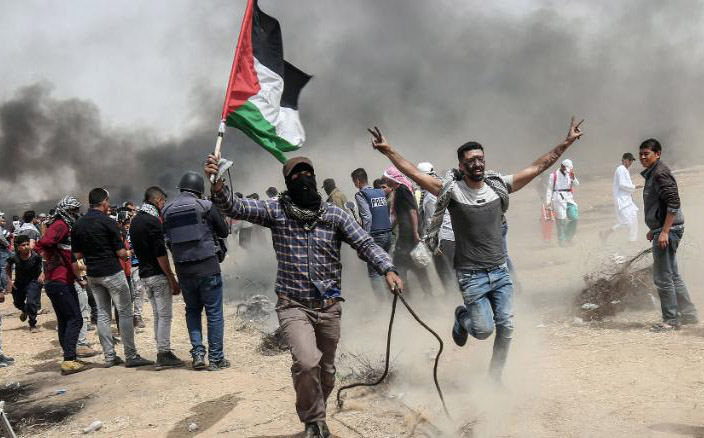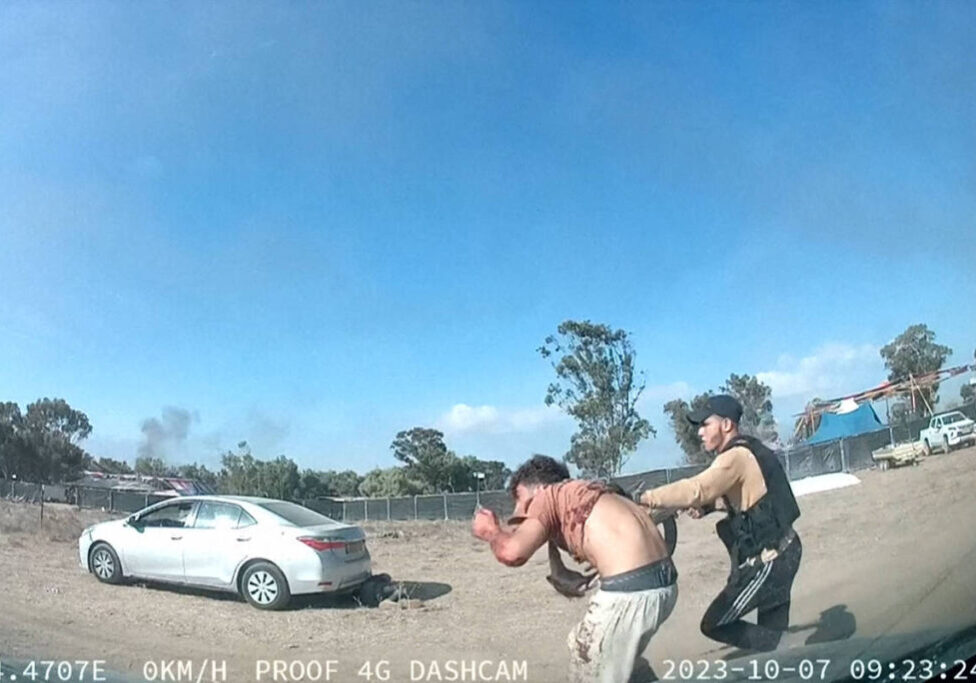Australia/Israel Review
Editorial: Tragedy and truth in Gaza
May 30, 2018 | Colin Rubenstein

When Australia woke on May 15 to various news reports that dozens of Palestinians had been killed when the Israel Defence Forces (IDF) “opened fire” on “protesters”, the natural reaction by most was to feel shock, and perhaps even to reflexively blame “those with the guns” for the tragic outcome.
Today, we have more facts to work with – incriminating evidence of the many ways that Hamas cynically exploited its own civilians in the so-called “March of Return” protests as cover for brutal attacks on Israel.
By any fair measure, what Hamas tried to pass off as “non-violent protest” would be considered a violent invasion in any other global context.
In Gaza, under the cover of a hailstorm of slingshot-propelled rocks and a dense smokescreen of burning tyres, Molotov cocktails, explosive devices and some gunfire, packs of trained fence-cutters stormed the border fence. Their explicit intention was to open up large breaches to allow the entry of tens of thousands of armed and unarmed Gazans to kill, kidnap and destroy amongst the 4,000 Israeli civilians living in border communities.
We also know that 50 out of 62 killed during clashes on May 14 were members of Hamas, and others were from other terror groups, while almost all of those killed were young men of military age. This should torpedo allegations that Israeli fire was “indiscriminate” shooting into peacefully demonstrating crowds.
We know, too, that Hamas paid protesters to attend, increased incentives for those who stormed the fence or were injured, pushed women and children to the front lines to act as human shields and fence-cutters, while armed infiltrators waited in the wings, and exercised complete operational control over both where and when the protests would commence and terminate.
None of these revealed truths, of course, should lessen the outrage at the senseless confrontation or regret at the needless loss of life. However, that outrage should absolutely be directed at the terror group Hamas, which orchestrated the bloody spectacle with the intention of deliberately placing its own people at risk.
Israel, for its part, acted with considerable restraint, as is made clear by front-line accounts from multiple Israeli analysts and eyewitnesses.
Nahum Barnea, one of the country’s most experienced journalists, detailed in his column on May 17 the full gamut of precautions the IDF had taken before May 14 to minimise the number of Palestinian fatalities.
Not only did the IDF stage large-scale war games to practise dealing with Gaza border violence on May 10, Southern Command chief Maj. Gen. Eyal Zamir called for maximum restraint. “Look for inciters among every surge of the mob and shoot at their feet [as opposed to their legs]; shoot others only if they reach zero range from the fence” were his orders, according to Barnea. Meanwhile, Israel sprayed “skunk spray”, a foul-smelling material, along the fence on the night of May 13, hoping it would be a deterrent, and on May 14 deployed drones to scatter tear gas in ways intended to waft down into the crowds only if they came too close to the fence. Thousands of Arabic leaflets were scattered over Gaza warning people not to approach the fence. “More than that”, a military source in the field told Barnea, “we could not do.”
In Ha’aretz – a left-wing newspaper critical of Israel’s response to the Gaza border threat – chief military analyst Amos Harel said he couldn’t blame the army for its actions after researching what happened. “After a series of visits to the border,” wrote Harel, “it’s difficult to complain about the sharpshooters or their direct commanders…”
Those who condemned Israel for not using enough non-lethal methods to stop the waves of violent infiltrators have never been able to suggest viable battlefield and riot control alternatives beyond what Israel actually did.
Aside from the moral issue, Israeli security forces were well aware that, strategically, every Palestinian death was a victory for Hamas. If viable non-lethal defence mechanisms had existed, Israel would have used them.
Meanwhile, here at home, Prime Minister Malcolm Turnbull and Foreign Minister Julie Bishop deserve high praise for their principled opposition to the United Nations Human Rights Council’s biased inquiry and support of Israel’s right under international law to defend its sovereign borders.
Their unequivocal rejection of Hamas’ use of civilians as cover for violent attacks on Israel sends the important message that the world should not reward Hamas’ violent tactics with pressure for unilateral Israeli concessions. This is in keeping with Australia’s long-standing support for the conditions set by the Middle East Quartet that Hamas end its use of violence, recognise Israel’s right to exist and accept previous Palestinian agreements and obligations.
Further, Australia’s stand signals to the Palestinians that political concessions, especially on dangerous deal-breaking demands such as the so-called “right of return”, can only be obtained through direct negotiations with Israel. Any attempt to physically “erase” the Armistice Line of 1949 and violate Israel’s sovereignty, as Hamas said it intended, must be rejected outright.
Where does this leave the majority of Gazans who do not aid and abet Hamas, but rather are victimised by it?
Sadly, any hope for a better outcome looks doubtful so long as Hamas controls the Gaza Strip and continues to place its Islamist ideological commitment to destroy Israel, and its profound conflict with the West Bank-based Palestinian Authority, ahead of the welfare of Gazans.
Israel’s options are limited. Rather, it is the international community that wields the greatest power to influence the outcome – not by pressuring Israel to end its limited blockade of materials which aid Hamas’ military, but by ensuring that Hamas derives no political benefit from its morally reprehensible exploitation of Palestinian misery – misery which is largely Hamas’ own creation. Serious relief for Gazans is simply impossible without far-reaching changes to Hamas behaviour.
Tags: Hamas






